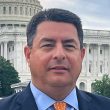Mother knows best
No doubt you heard about the huge snowfalls that we had in the Washington, D.C., area this past winter. During one of the storms, my mom was snowed in for several days, with no power. While I had power after a brief outage, I was unable to get to her because the streets in her general vicinity hadn’t been plowed and the roads were totally impassable.
Thank goodness my mom is not in poor health, but her house did get down to 38 degrees for a couple of days. And there wasn’t anything that I could do about it.
With time on my hands, I started thinking about who my mom’s first responders were. If she had a problem, police cars or fire trucks would not have been able to get within a quarter mile of her house. In this instance, my mom’s first responders needed to be the snow plows and the utility crews.
Eventually, these first responders came to her rescue before any permanent damage was done. Fortunately, the event that kept my mom in bed under a bunch of blankets for a couple of days turned out to be just another story to share with her friends. But the outcome could have been very different.
Through the years, there has been a lot of strife as to what constitutes “emergency communications.” Many trees have fallen to the debate over eligibility, spectrum allocations and permissible communications. The reality, however, is that our world is a complicated place. As such, the communications that support the continued functionality of society must be the first thought, not an afterthought.
What I learned from the storms of this past winter is that the term “first responder” represents a fluid concept. As the FCC conducts its spectrum evaluation as part of its current broadband proceeding, I hope that it will remember this past winter, and also take into account events such as hurricanes and earthquakes. Events of this magnitude not only highlight the importance of “emergency communications,” but also how such calamities can necessitate immediate response from different types of responders at different times.
Consideration also must be given to those wireless communications that are intended to prevent disasters before they happen. For example, the Federal Railroad Administration’s effort to implement Positive Train Control for all passenger railroads is designed to monitor train movements and automatically take control of trains before an accident can occur. This system requires the use of spectrum as an integral part of the operation. Yet, there has been no set-aside of sufficient spectrum to implement the system in major urban areas, where the system arguably is most needed.
In considering continued or new uses of spectrum, it is important to keep in mind how life-saving communications such as these must be accommodated, expanded and supported. The allure of an interconnected national telecommunications superhighway cannot ignore the communications that get us safely and securing through the day. And those communications come from a variety of corners. It may not be politically expedient to make such concessions, or win any elections, but we all feel the impact when these vital communications are not considered as part of the spectrum picture.
My mom continues to teach me lessons after all of these years.
What do you think? Tell us in the comment box below.
Alan Tilles is counsel to numerous entities in the private radio and Internet industries. He is a partner in the law firm of Shulman Rogers Gandal Pordy & Ecker and can be reached at [email protected].

















